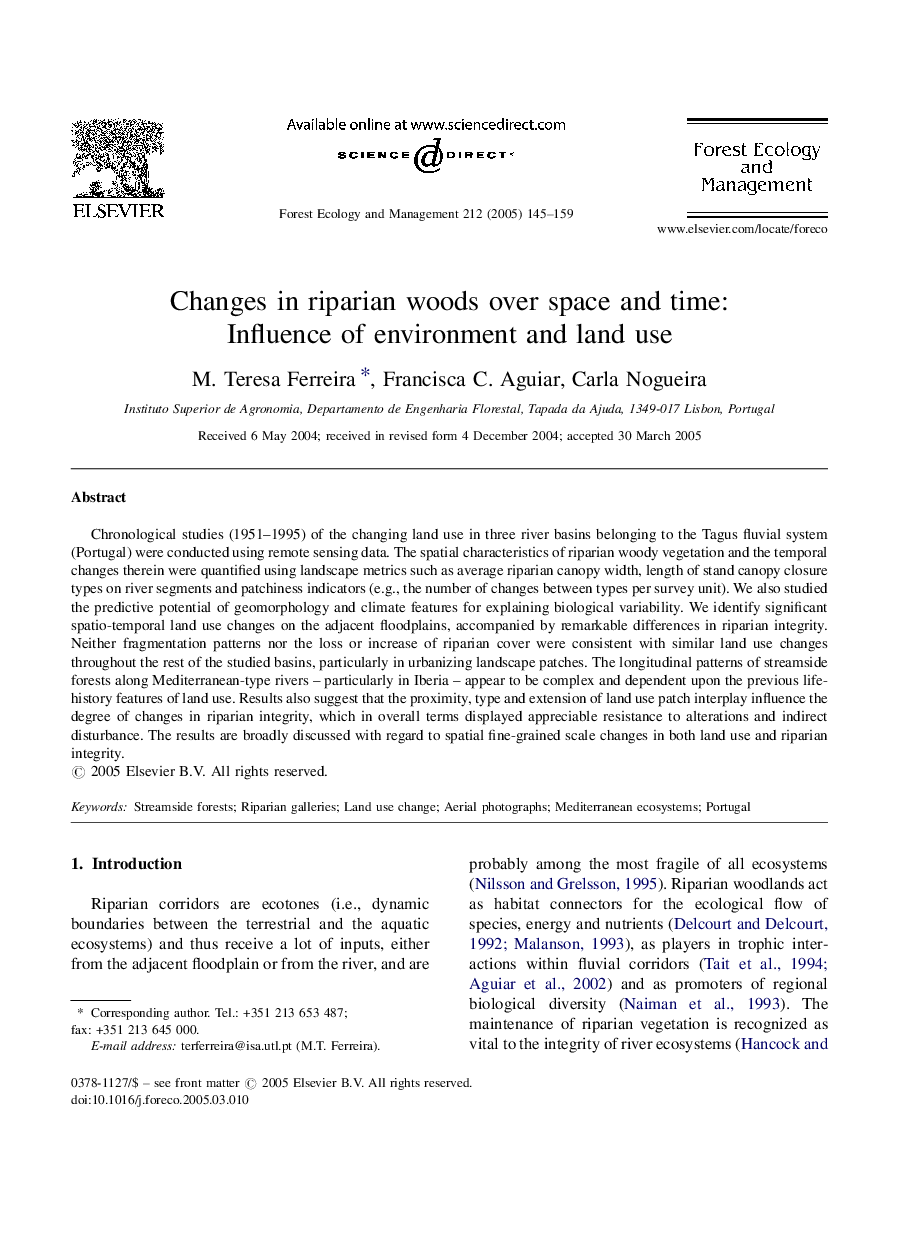| Article ID | Journal | Published Year | Pages | File Type |
|---|---|---|---|---|
| 9620306 | Forest Ecology and Management | 2005 | 15 Pages |
Abstract
Chronological studies (1951-1995) of the changing land use in three river basins belonging to the Tagus fluvial system (Portugal) were conducted using remote sensing data. The spatial characteristics of riparian woody vegetation and the temporal changes therein were quantified using landscape metrics such as average riparian canopy width, length of stand canopy closure types on river segments and patchiness indicators (e.g., the number of changes between types per survey unit). We also studied the predictive potential of geomorphology and climate features for explaining biological variability. We identify significant spatio-temporal land use changes on the adjacent floodplains, accompanied by remarkable differences in riparian integrity. Neither fragmentation patterns nor the loss or increase of riparian cover were consistent with similar land use changes throughout the rest of the studied basins, particularly in urbanizing landscape patches. The longitudinal patterns of streamside forests along Mediterranean-type rivers - particularly in Iberia - appear to be complex and dependent upon the previous life-history features of land use. Results also suggest that the proximity, type and extension of land use patch interplay influence the degree of changes in riparian integrity, which in overall terms displayed appreciable resistance to alterations and indirect disturbance. The results are broadly discussed with regard to spatial fine-grained scale changes in both land use and riparian integrity.
Related Topics
Life Sciences
Agricultural and Biological Sciences
Ecology, Evolution, Behavior and Systematics
Authors
M. Teresa Ferreira, Francisca C. Aguiar, Carla Nogueira,
